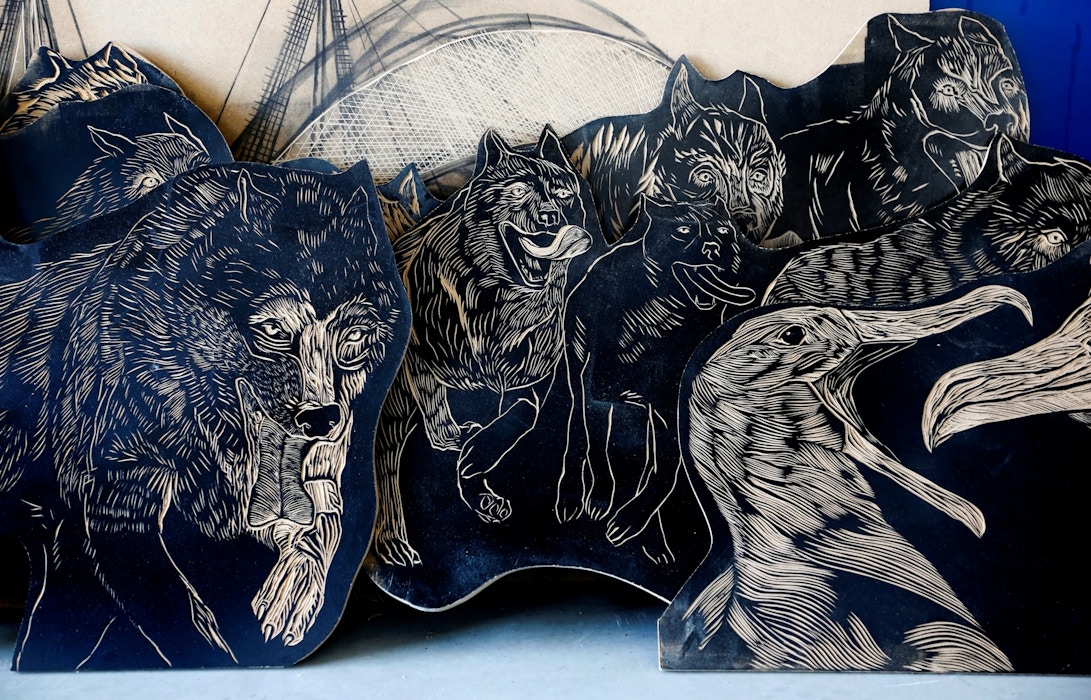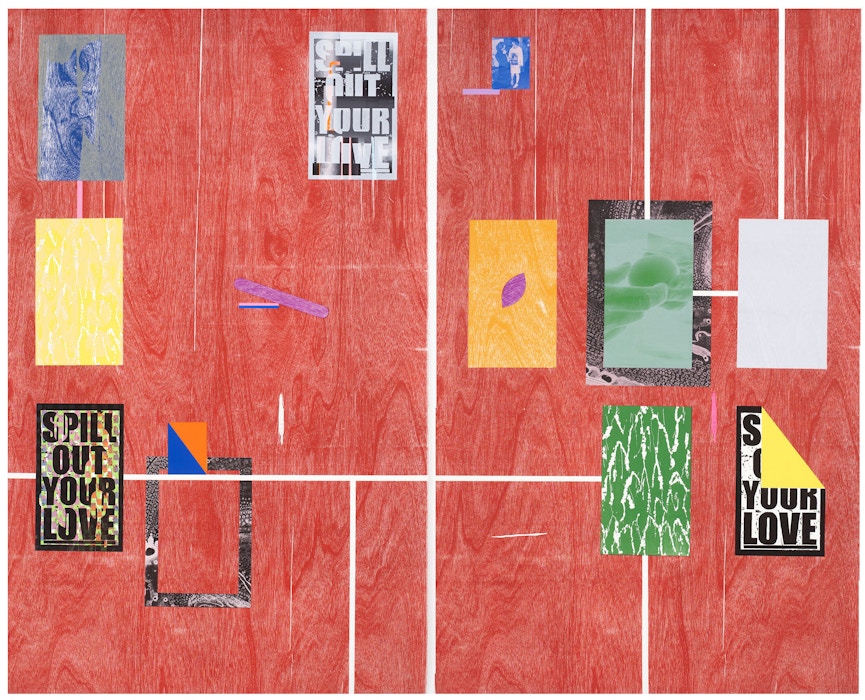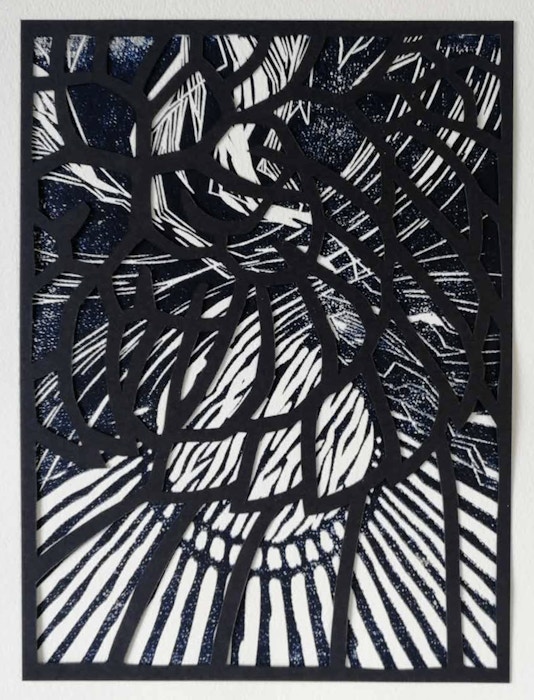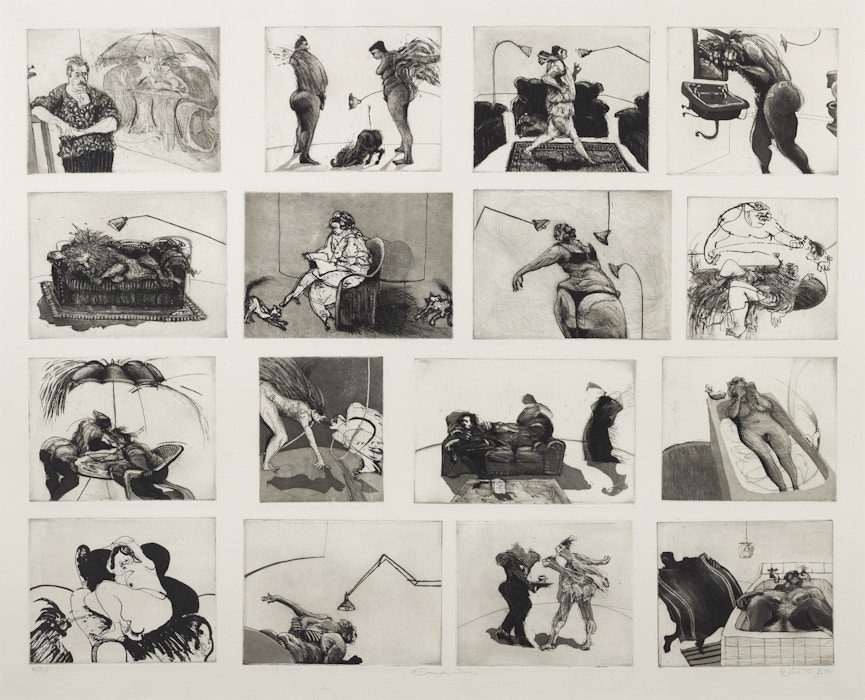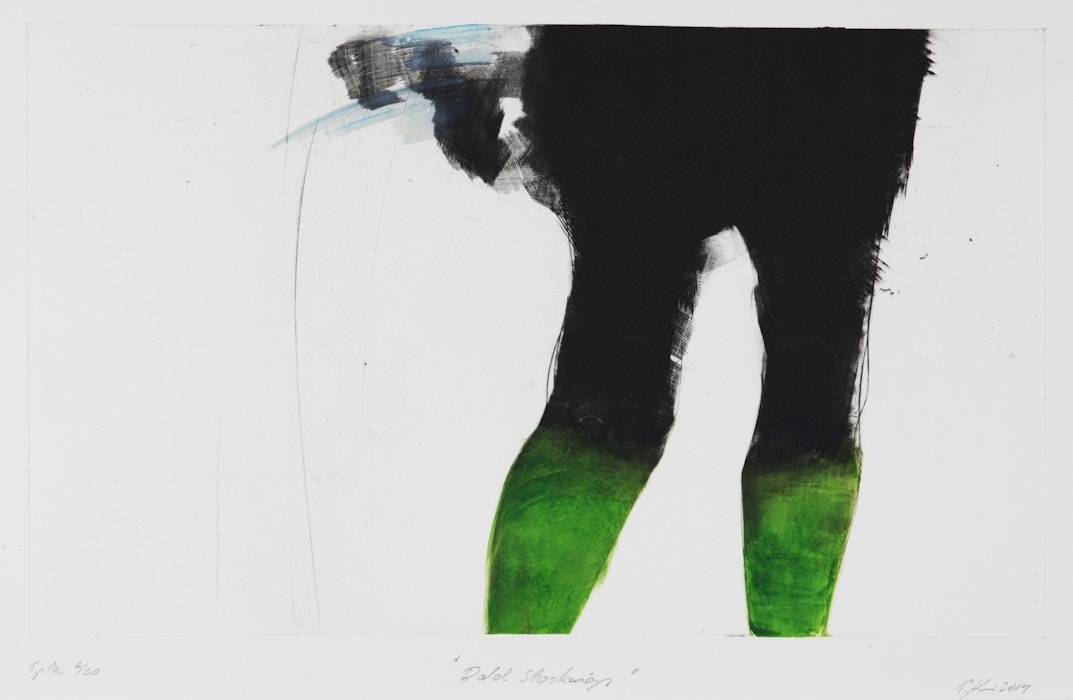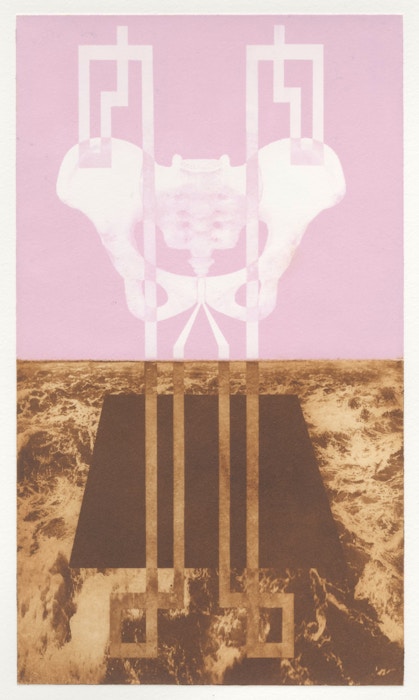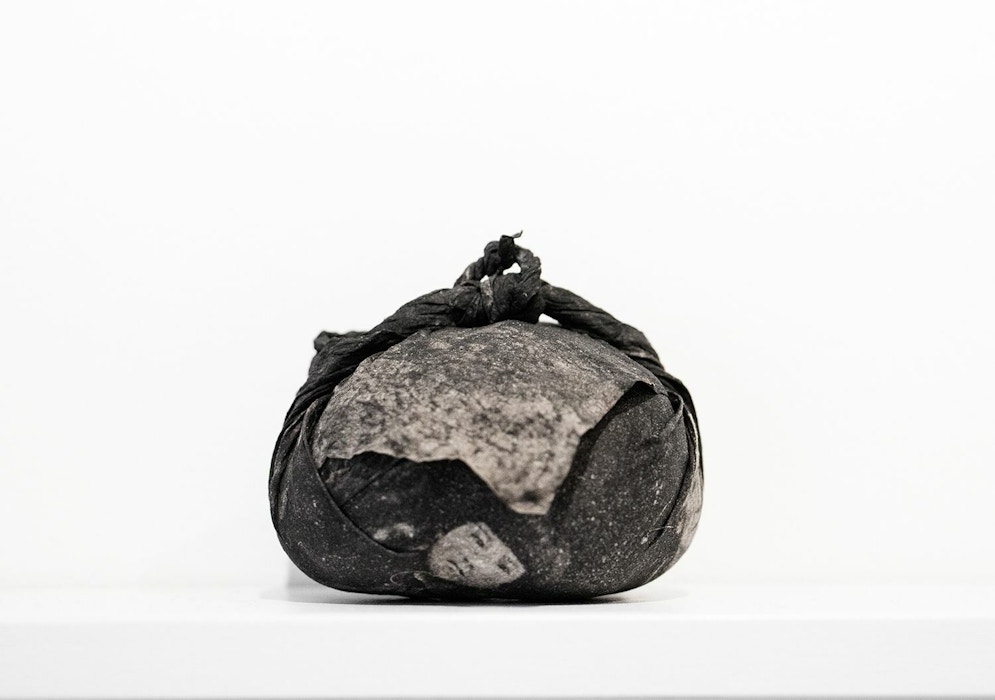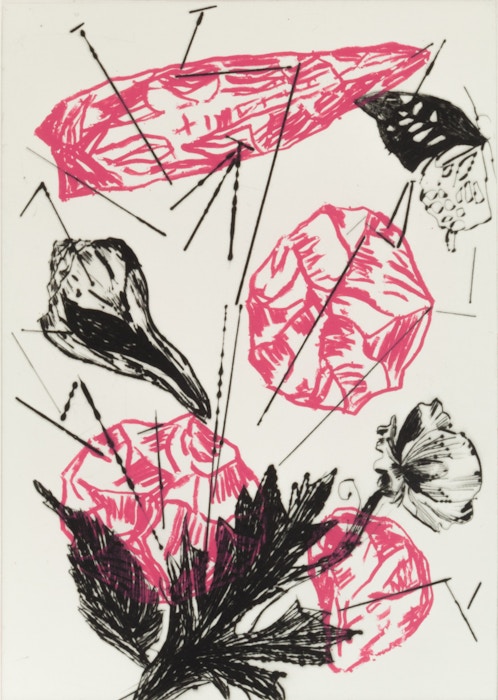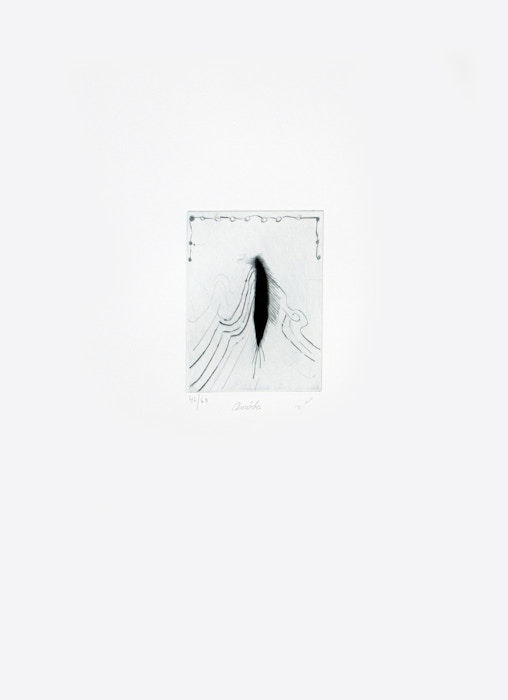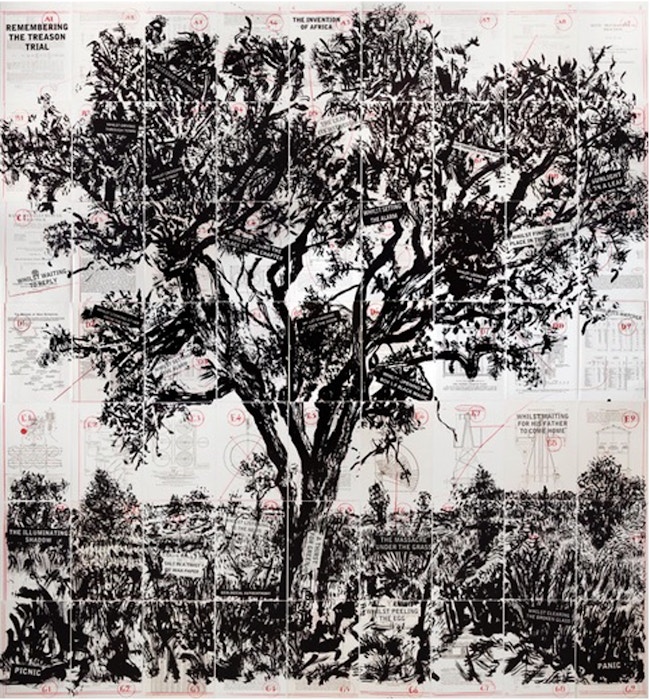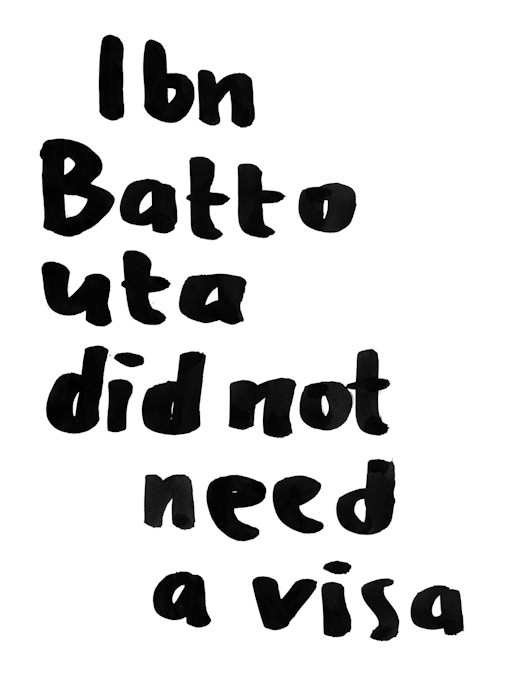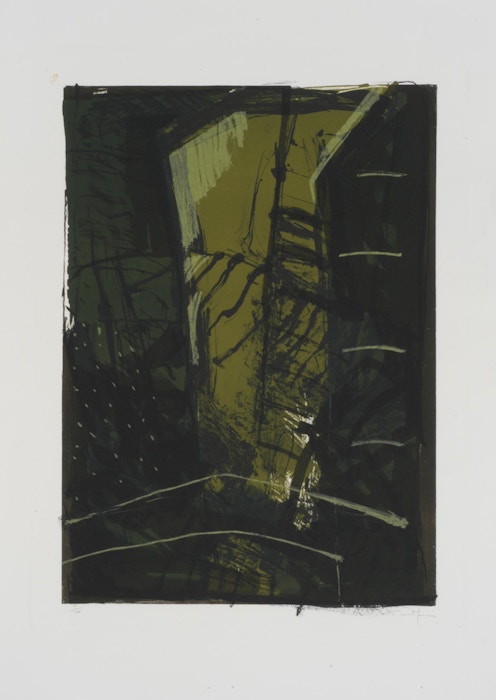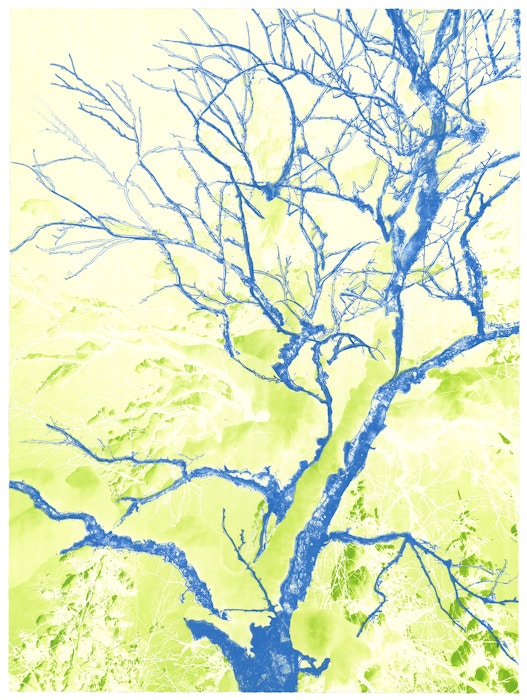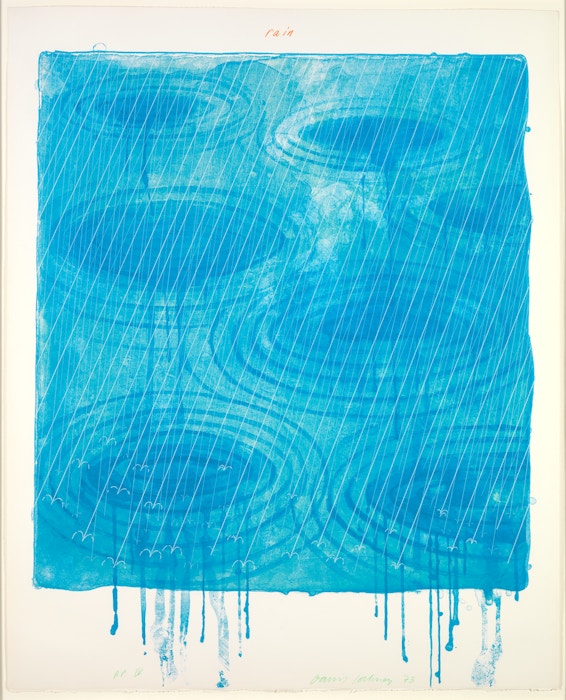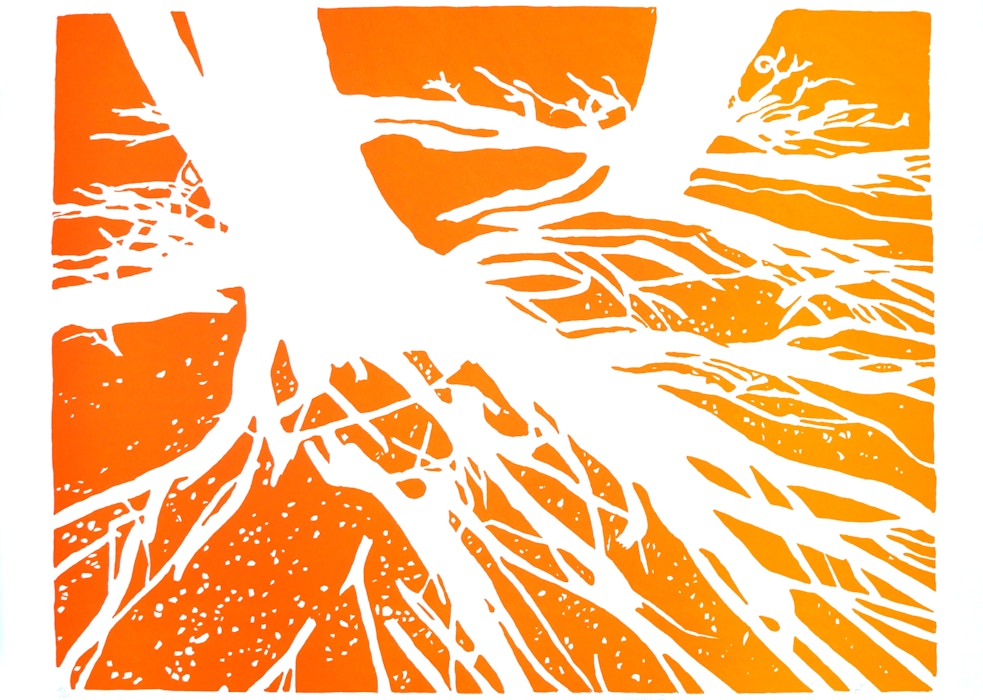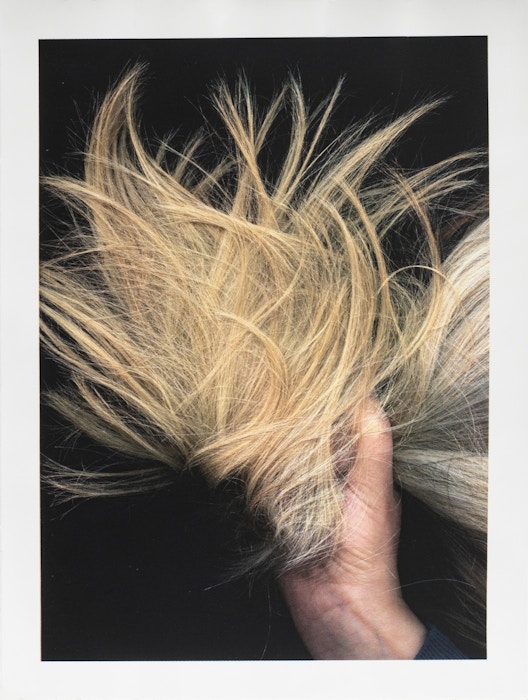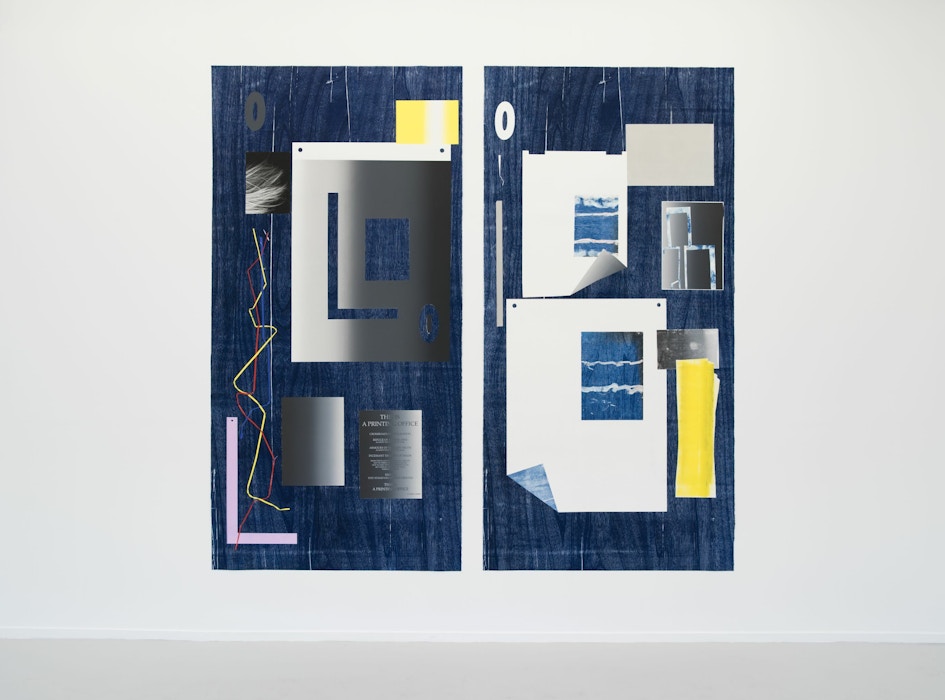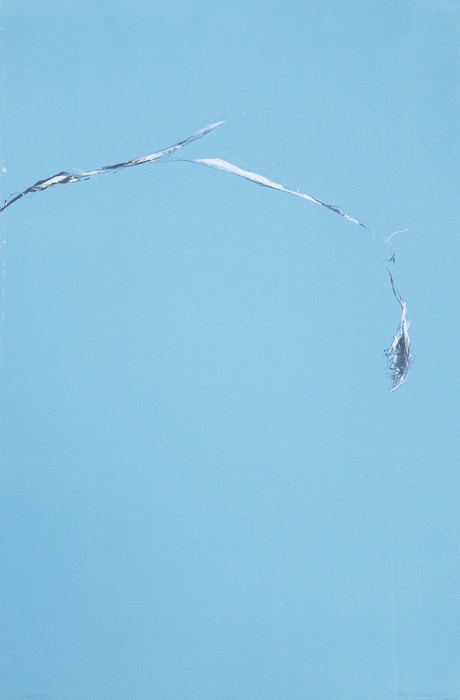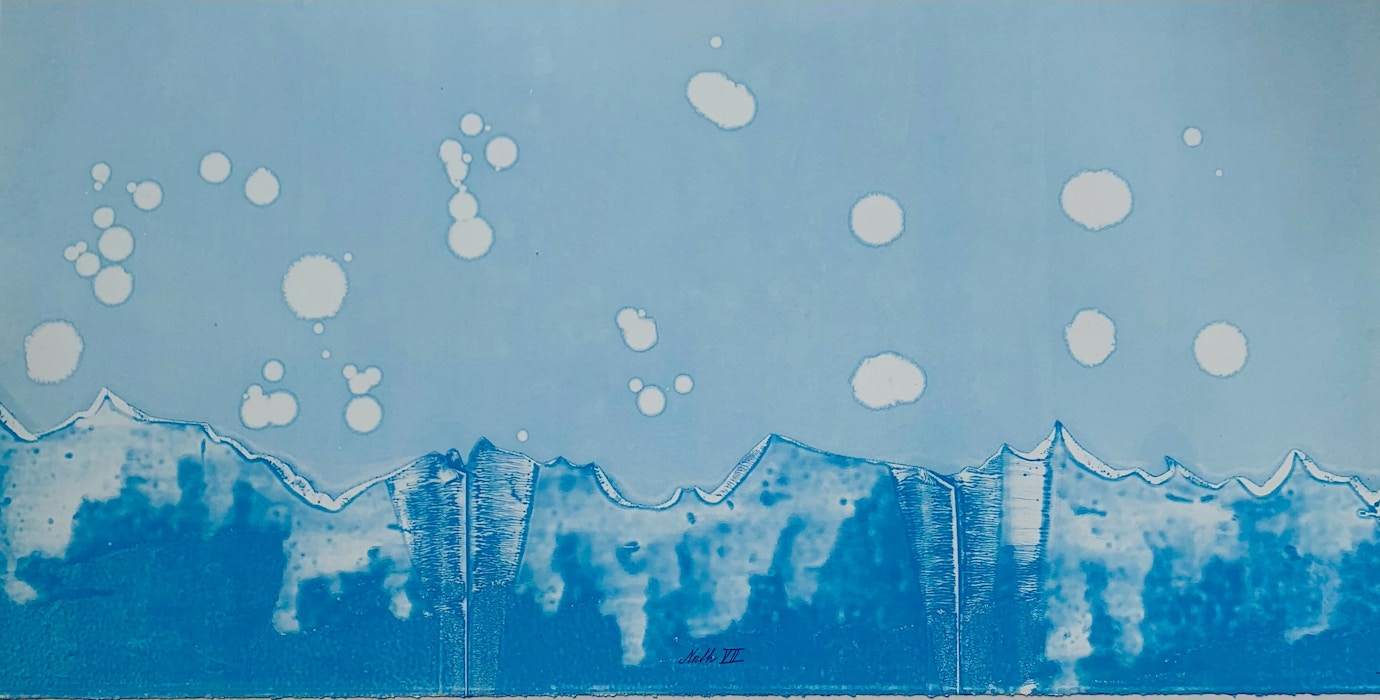Printmaking is the process of transferring an image from one surface to another. The image is first made on a surface known as “the matrix”. By inking the matrix and pressing it onto another surface, a print is formed. One central characteristic of printmaking is its ability to produce multiples from the single image.
Three basic types of prints are defined by the ink´s placement: raised parts of the printing surface (relief), lowered grooves (intaglio), or on the surface itself (planographic or surface). Within these types, various possibilities emerge, with different printmaking techniques offering unique avenues for expression.
Printing studios and Workshops in the Nordic Countries
Relief prints
Relief printmaking techniques involve carving into the printing surface, where the artist carves around the intended image, leaving it in a raised form. The raised parts of the surface are inked and printed, while the carved-out areas remain ink-free.
Woodcut was developed in China around 200AD, which makes it the oldest form of printmaking. The process involves sculpting a block of wood by carving and cutting away all that is not going to be printed, leaving the image raised in relief. This raised surface is then inked and the print can be taken by hand or with a printing press. The paper picks the ink from the raised areas of the block, and at the moment of printing the ink is squashed towards the areas where there are less pressure, namely around the sides of the raised areas, and there often creating a darker rim. Woodcut blocks are made from the side grain of the tree, and it is easy to cut and carve along the grain, but the wood splinters easily when cutting across or against it. In many woodcut prints, you might notice the natural pattern and the direction of the grain of the wood as integrated in the printed image. Woodcut prints often have strong contrasts between light and dark areas. The carved lines and grooves tend to create bold and defined shapes.
Wood engraving is a meticulous method where artists use fine, steel cutting tools to incise lines into a woodblock´s surface. What sets wood engravings apart from woodcut prints is the absence of the characteristic wood grain. This distinction arises from the use of end-grain wood as the printing matrix, in contrast to long grain wood used in woodcut prints. The end-grain surface provides a smooth and even foundation for engraving, allowing artists to achieve finely detailed images. Wood engravings are typically closely worked and small-scale due to the finely pointed tools used in the process. The technique´s finesse results in a rich tonal range, making wood engravings especially suitable for black and white compositions. After the engraving process is complete, a thin layer of printing ink is evenly applied to the woodblock. Then a sheet of smooth paper is placed onto the inked block. The print can be taken either by hand – rubbing the back of the paper with a spoon – or by using a platen press. This ensures that the inked lined transfer onto the paper, capturing the image in the final print.
Linocut, once a common and affordable flooring material, took on a new artistic role in the 1920s when it started being utilized for making relief prints. Linocut printing is very similar in technique and process to woodcut, but differs in style and surface quality due to the properties of the base material. Linoleum is a soft and sympathetic medium, allowing effortless cutting in all directions. Areas left untouched by carving give rise to the printed image. By rolling ink onto its slightly textured surface, linoleum uniformly accepts the ink, resulting in solid and consistent color fields in the final prints.
Intaglio print
Intaglio encompasses techniques in which the image is etched or incised into a metal plate, and ink is retained in these recessed areas of the printing surface. To ensure that the ink is transferred to the paper from these incised lines, the upper surface of the plate must be relatively free of ink. Artists achieve this by wiping the plate, directing the ink downhill while simultaneously cleaning it from the top. Intaglio plates are typically printed using a roller press with substantial pressure, forcing the damp paper into the incised lines. This process results in the transfer of ink to the paper, creating the final image and leaving a characteristic platemark - a raised impression around the beveled edge of the metal plate pressed into the paper.
Drypoint is distinguished by its sharp lines, which possess uniquely fuzzy edges. The creation of these fuzzy edges is made by a sharp, needle-like tool to incise lines directly into a metal plate. As the tool delicately pushes the metal aside, it produces a slightly raised, ragged edge known as the burr. When ink is applied to the plate, both elements capture the ink, but it is the burr that bestows drypoint with their uniquely fuzzy and velvety appearance. The burr possesses a delicate nature and cannot withstand the pressure exerted by an intaglio press for an extended period. Consequently, drypoint are typically produced in small editions.
Engravings are created using a specialized tool called a burin, which is a sharp, v-shaped metal blade. The burin cut lines directly into the plate´s surface, and by varying the angle and pressure during incision, artists control the quantity of ink the lines can hold, leading to variations in width and darkness when printed. This method creates a crisp, precise line that swells in the middle and tapers at the end, giving engravings their distinct characteristics.
Etching is a technique where a metal plate is coated with a thin layer of acid-resistant ground, providing a receptive surface for drawing. Artists can choose between a hard or a soft ground. The advantage of using a soft ground lies in its sensitivity to touch; it captures textures from textiles, paper and more, adding depth to the artwork. Artists employ an etching needle, a fine-pointed tool, to incise the plate by drawing through the ground. The plate, with the drawn lines exposed, is then immersed in acid. During this process, the ground acts as a protective barrier, safeguarding the areas it covers while the acid bites into the exposed lines. The intensity and depth of the lines depend on factors such as the strength of the acid and the duration of exposure. It produces a rage of thin, fluid lines, creating various effects from elegant and sinuous to precise and textured. Once the acid work is complete, the coating is removed from the plate. The plate is then coated with ink, ensuring it fills all the grooves. Excess ink is wiped off before the plate goes through the press, where the applied pressure forces the paper into the incised lines, picking up the ink and resulting in a final printed image.
Spit bite is a relatively freeform technique that allows artist to achieve loose and fluid tonal effects, with a spontaneous and organic appearance. Acid is applied directly on an etching plate, and with a brush in hand you literally paint with acid. The acid bites into the plate, resulting in slightly darker areas in the final print. The term ”spit bite” originates from the historical practice of using one´s own spit to create a milder acid solution, so the acid won´t bite too aggressively on the plate, thus creating a more subtle and misty feeling that this technique is known for. However, contemporary artist often uses alternatives such as copper sulfate or other acid solutions instead of their own spit.
Aquatint creates tonal variations that have a distinctive grainy texture. The edges of shapes and forms in an aquatint print tend to have a soft, blurred appearance. To achieve these characteristics, fine particles of an acid-resistant material are sprinkled onto the plate and heated until they melt and adhere to the plate as tiny dots. The desired white areas in the print must be covered with an acid-resistant substance before immersing the plate in an acid bath, resulting in a granular pattern of small indented rings as the acid interacts with the exposed particles. Gradations of tone are achieved by adjusting the duration of the plate´s immersion in the acid bath, with longer durations producing deeper rings for darker areas of tone.
Mezzotint is a printmaking technique that creates smooth gradations and seamless transitions across a wide range of tones, giving rise to a gentle and atmospheric quality. The process involves using a curved blade with small teeth, creating numerous tiny burrs on the plate´s surface. These roughened textures enable the plate to hold a significant amount of ink, resulting in densely saturated areas with deep blacks. To create lighter areas a burnishing tool is utilized to press down and flatten the raised burrs, regulating the ink distribution. With this technique, artists can attain an exceptional level of detail.
Photopolymer is a technique that enables the reproduction of photographs, digital designs, and drawings. The term 'photopolymer' originates from the Greek word 'phos,' meaning light, and 'polymer,' which refers to the light-sensitive compound used on the plates. In essence, it is the reaction of the polymers to light that creates the print. The process begins with creating an image on a transparent sheet, which serves as a carrier for transferring the image onto a photopolymer plate. When exposed to ultraviolet light, the plate undergoes a chemical reaction that hardens the polymer. The unexposed areas remain soft and are later washed away, leaving behind a relief image. The areas that receive the most light appear dark in the final print, while the areas that have not been exposed to light remain as white as the paper.
Planographic Print
A planographic print refers to a prints where the image is printed from a flat stone or plate, that has been treated chemically so that some areas hold ink and others refuse it.
Lithography, a term derived from the Greek language meaning “writing on stone”, perfectly encapsulates the essence of this technique: creating an image on a flat limestone surface. At the heart of this process lies the water-repellant properties of greasy inks. When a greasy substance touches the stone, a chemical reaction occurs, transforming the top layer of the stone´s surface and making it hydrophobic - meaning it repels water and adores grease. Once the image is complete, the stone undergoes another critical step called “the etch”. During this phase, the stone is chemically prepared to ensure that during printing, the greasy printing ink adheres exclusively to the grease loving parts of the stone. Maintaining the stone´s moisture throughout the printing process is pivotal. This moisture ensures that the damp, undrawn areas of the stone repel ink from the roller, allowing the drawn image on the stone to materialize as the final printed image.
Offset lithography is a printmaking process in which a design applied to a lithographic stone or plate is picked up by a rubber roller. The roller is then rolled over a piece of paper to produce the print. Since the original image has been reversed twice in the process, it prints the right way round.
Screen Printing
Screen printing, also known as silk screen or serigraphy, is a stencil-based printing technique, known for its ability to create vibrant colors and sharp details on various surfaces such as fabric, paper, plastic, glass, metal and more.
To create a print, a fine-mesh fabric is tightly stretched over a rectangular frame. This fabric is then prepared to establish open and closed areas where stencils can be used in several ways. They can be directly designed on the fabric using glue, varnish, or plastic film, or pre-made stencils can be affixed to the fabric. Additionally, this technique allows for the use of photo-stencils, so that photographic and digitally produced materials can be incorporated into the print. The screen is coated with a light-sensitive emulsion and placed in contact with a photographic negative. Light is then shone through the transparency on to the emulsion, which hardens under exposure but remains soft where protected by the black areas of the transparency. During development, the light-protected soft areas dissolve, leaving the hard exposed emulsion to act as a stencil. Dyeing and printing occur in one operation. The screen is placed on top of the material intended for printing. Printing ink is spread over the upper side of the mesh and with a rubber blade, pushed through the unblocked areas to the opposite side. During the printing process, the pressure should not be particularly strong or forceful. In this way, the ink is not pressed deeply into the surface, but instead, it rests on top, creating a slightly raised colored surface. A distinctive feature of the silk screen technique is the dense and even color surfaces. Thick coating is possible and that makes colors more vivid, the finish more opaque, and improves resistance to fading.
Monotype
Monotype is a one-of-a-kind, unique print. It deviates from one of the primary purposes of printing, which is to generate multiple examples from a single plate. However, because it involves the transfer of ink to paper through pressure, it is still regarded as a form of print.
Monotypes have been called ‘the printers painting’ due to their use of techniques rooted in painting and drawing. The ideal printing surface should be firm, flat, and non-absorbent, onto which paint or printing ink is directly applied. The approaches to creating a monotype can be as diverse as the artists working in the medium, and the range of tools possible for printing encompasses pretty much all the tools found in a printmaking studio.
Since the marks used to create the image aren´t physically ingrained in the printing plate, it´s only possible to produce a single print. Occasionally, the remaining ink on the plate is sufficient to produce another weaker print, known as a ghost print.
Monoprint distinguishes itself from monotype by incorporating a partial matrix. After inking and wiping the matrix, unique, nonrepeatable marks are introduced to it. The subsequent step involves printing the matrix in a single pass through the press.
